Hao Qi
Humanity's Last Exam
Jan 24, 2025Abstract:Benchmarks are important tools for tracking the rapid advancements in large language model (LLM) capabilities. However, benchmarks are not keeping pace in difficulty: LLMs now achieve over 90\% accuracy on popular benchmarks like MMLU, limiting informed measurement of state-of-the-art LLM capabilities. In response, we introduce Humanity's Last Exam (HLE), a multi-modal benchmark at the frontier of human knowledge, designed to be the final closed-ended academic benchmark of its kind with broad subject coverage. HLE consists of 3,000 questions across dozens of subjects, including mathematics, humanities, and the natural sciences. HLE is developed globally by subject-matter experts and consists of multiple-choice and short-answer questions suitable for automated grading. Each question has a known solution that is unambiguous and easily verifiable, but cannot be quickly answered via internet retrieval. State-of-the-art LLMs demonstrate low accuracy and calibration on HLE, highlighting a significant gap between current LLM capabilities and the expert human frontier on closed-ended academic questions. To inform research and policymaking upon a clear understanding of model capabilities, we publicly release HLE at https://lastexam.ai.
Physics-Aware Semi-Supervised Underwater Image Enhancement
Jul 21, 2023Abstract:Underwater images normally suffer from degradation due to the transmission medium of water bodies. Both traditional prior-based approaches and deep learning-based methods have been used to address this problem. However, the inflexible assumption of the former often impairs their effectiveness in handling diverse underwater scenes, while the generalization of the latter to unseen images is usually weakened by insufficient data. In this study, we leverage both the physics-based underwater Image Formation Model (IFM) and deep learning techniques for Underwater Image Enhancement (UIE). To this end, we propose a novel Physics-Aware Dual-Stream Underwater Image Enhancement Network, i.e., PA-UIENet, which comprises a Transmission Estimation Steam (T-Stream) and an Ambient Light Estimation Stream (A-Stream). This network fulfills the UIE task by explicitly estimating the degradation parameters of the IFM. We also adopt an IFM-inspired semi-supervised learning framework, which exploits both the labeled and unlabeled images, to address the issue of insufficient data. Our method performs better than, or at least comparably to, eight baselines across five testing sets in the degradation estimation and UIE tasks. This should be due to the fact that it not only can model the degradation but also can learn the characteristics of diverse underwater scenes.
A Pre-Computing Solution for Online Advertising Serving
Jul 04, 2022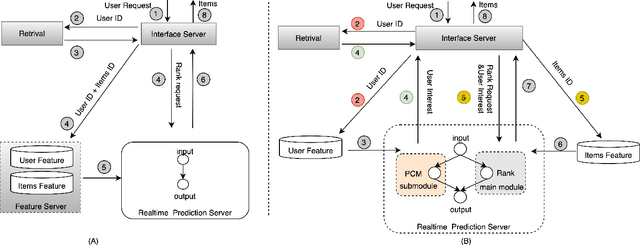

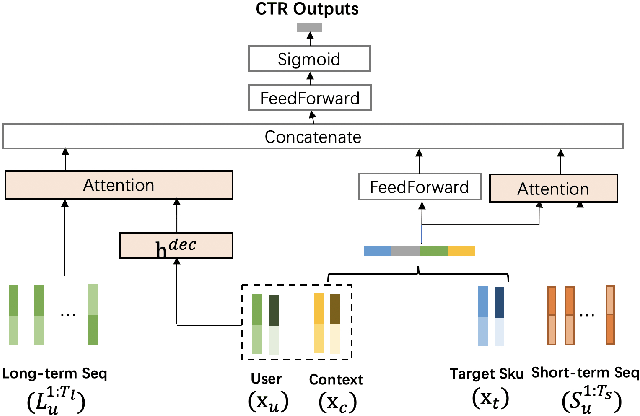
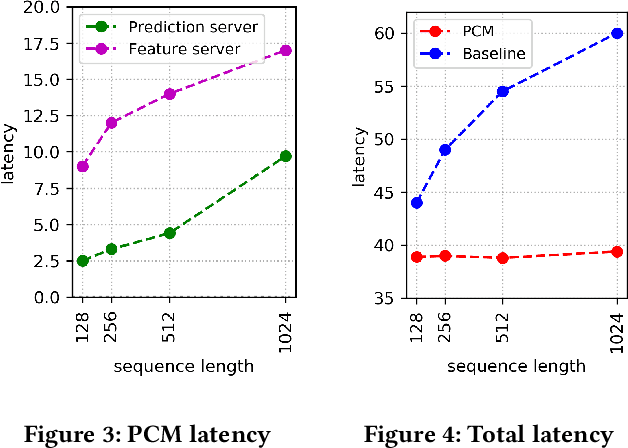
Abstract:Click-Through Rate (CTR) prediction plays a key role in online advertising systems and online advertising. Constrained by strict requirements on online inference efficiency, it is often difficult to deploy useful but computationally intensive modules such as long-term behaviors modeling. Most recent works attempt to mitigate the online calculation issue of long historical behaviors by adopting two-stage methods to balance online efficiency and effectiveness. However, the information gaps caused by two-stage modeling may result in a diminished performance gain. In this work, we propose a novel framework called PCM to address this challenge in the view of system deployment. By deploying a pre-computing sub-module parallel to the retrieval stage, our PCM effectively reduces overall inference time which enables complex modeling in the ranking stage. Comprehensive offline and online experiments are conducted on the long-term user behaviors module to validate the effectiveness of our solution for the complex models. Moreover, our framework has been deployed into a large-scale real-world E-commerce system serving the main interface of hundreds of millions of active users, by deploying long sequential user behavior model in PCM. We achieved a 3\% CTR gain, with almost no increase in the ranking latency, compared to the base framework demonstrated from the online A/B test. To our knowledge, we are the first to propose an end-to-end solution for online training and deployment on complex CTR models from the system framework side.
IA-GCN: Interactive Graph Convolutional Network for Recommendation
Apr 08, 2022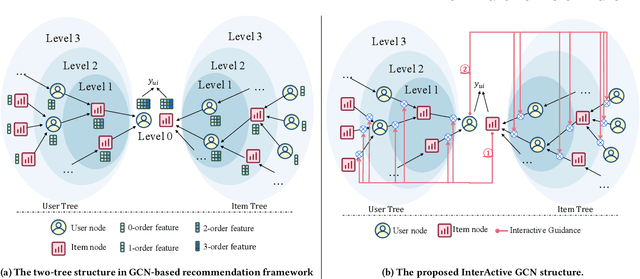
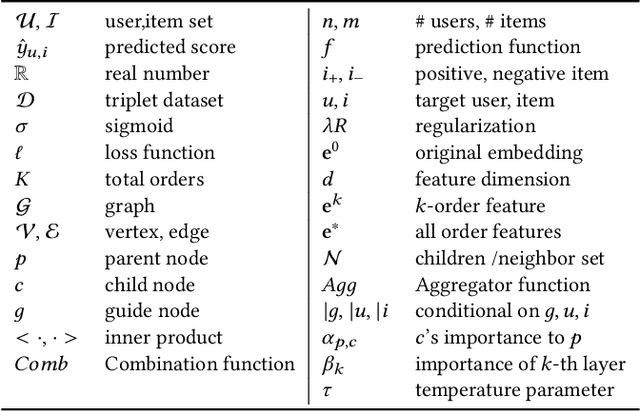

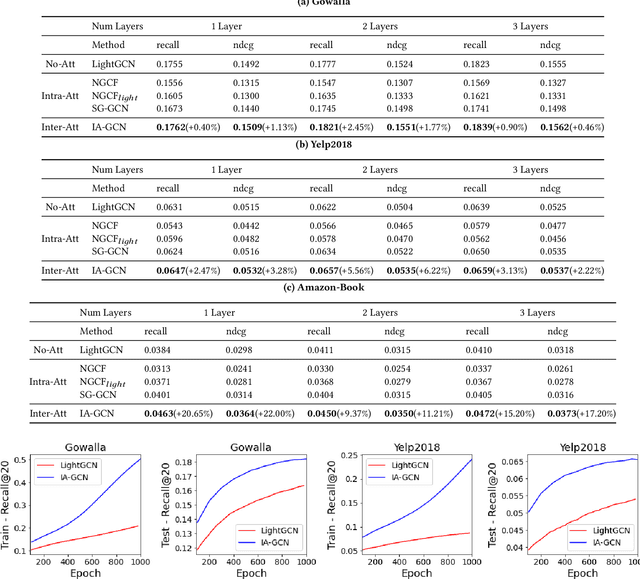
Abstract:Recently, Graph Convolutional Network (GCN) has become a novel state-of-art for Collaborative Filtering (CF) based Recommender Systems (RS). It is a common practice to learn informative user and item representations by performing embedding propagation on a user-item bipartite graph, and then provide the users with personalized item suggestions based on the representations. Despite effectiveness, existing algorithms neglect precious interactive features between user-item pairs in the embedding process. When predicting a user's preference for different items, they still aggregate the user tree in the same way, without emphasizing target-related information in the user neighborhood. Such a uniform aggregation scheme easily leads to suboptimal user and item representations, limiting the model expressiveness to some extent. In this work, we address this problem by building bilateral interactive guidance between each user-item pair and proposing a new model named IA-GCN (short for InterActive GCN). Specifically, when learning the user representation from its neighborhood, we assign higher attention weights to those neighbors similar to the target item. Correspondingly, when learning the item representation, we pay more attention to those neighbors resembling the target user. This leads to interactive and interpretable features, effectively distilling target-specific information through each graph convolutional operation. Our model is built on top of LightGCN, a state-of-the-art GCN model for CF, and can be combined with various GCN-based CF architectures in an end-to-end fashion. Extensive experiments on three benchmark datasets demonstrate the effectiveness and robustness of IA-GCN.
 Add to Chrome
Add to Chrome Add to Firefox
Add to Firefox Add to Edge
Add to Edge